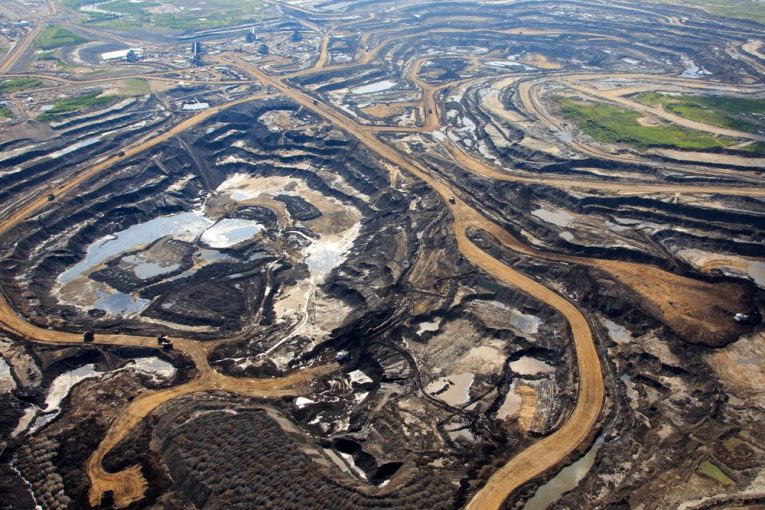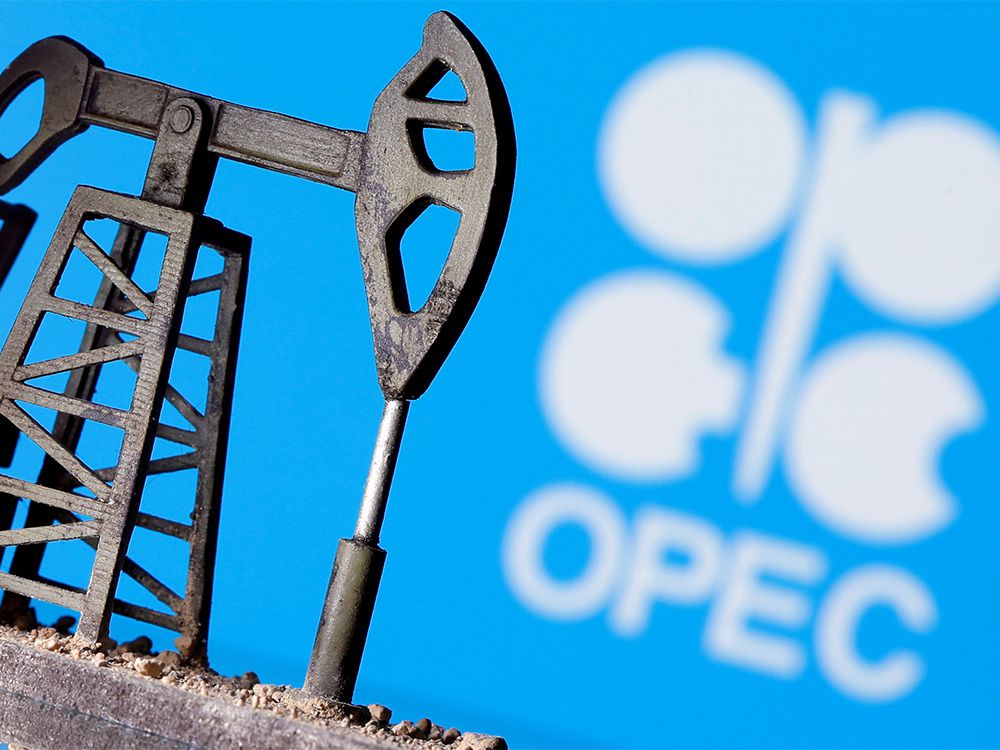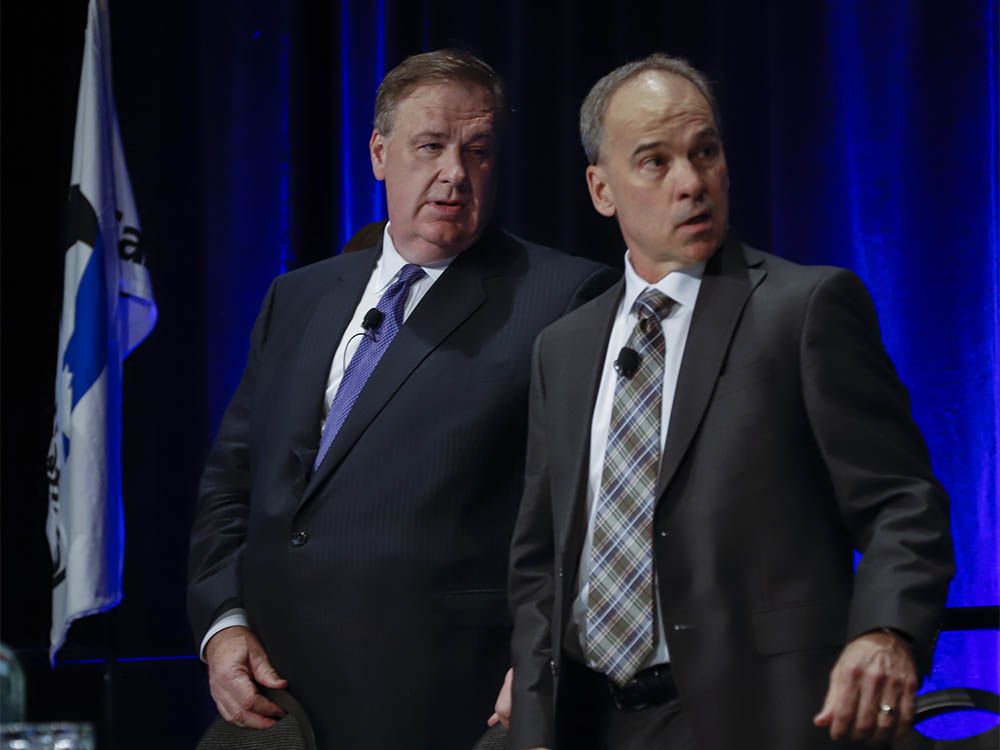
Buoyant oil markets began to close in on US$65 a barrel earlier this week — and then promptly punched through that barrier on Friday.
Just don’t expect the president of Canada’s biggest oil producer to start betting on these higher prices quite yet, given the gravity-defying ride of the past 12 months.
“A year ago, we were feeling pretty good. Then, of course, the pandemic hit, demand came down, we had the oversupply,” Tim McKay of Canadian Natural Resources said in an interview.
“Obviously, the OPEC (leaders) have a pretty big hammer that they could increase supply and change that very rapidly. So I am just cautiously optimistic.”
Benchmark West Texas Intermediate (WTI) crude prices jumped more than $2.50 on Thursday to close at $63.83.
By Friday morning, U.S. oil prices continued to rise, soaring above $65.50 in New York.
It came as OPEC and its partners signalled they will stick with aggressive output cuts for another month, instead of potentially adding up to 1.5 million barrels per day of production in April.
The outlook continues to brighten for the Canadian oilpatch, although the industry is charting a deliberate, restrained path for the year.
U.S. oil prices have surged by a third since the end of December as COVID-19 vaccination programs have begun and global energy demand appears to be recovering.
At the CERAWeek energy conference by IHS Markit this week, Saudi Aramco CEO Amin Nasser said world oil demand is now around 94 million barrels a day and is expected to bounce back to pre-COVID levels sometime in 2022.
“I see demand in the market continuing to improve from here, especially from the second half of this year,” he said.
“The recovery is underway. It wouldn’t be surprised to see some fits and starts in that,” added Chevron Corp. CEO Mike Wirth.
OPEC+ has added to the optimism, agreeing to maintain its production discipline at Thursday’s meeting.

“It was definitely a surprise,” said Martin King, senior analyst at RBN Energy in Calgary.
“Certainly, something around $60 is defensible, given how we are seeing global inventories come down and expectations for improved demand in the second half of this year.”
For Canadian oil producers, the past 12 months have been an unpredictable journey after energy demand crashed because of the pandemic as people stayed home, air travel was grounded and businesses closed.
Prices for WTI crude plunged to an unprecedented negative $37.63 a barrel last April after a brief oil-price fight broke out between Saudi Arabia and Russia.
A year later, prices have recovered and the effect is beginning to flow through to battle-hardened Canadian producers.
McKay, whose company produced 1.16 million barrels of oil equivalent per day last year, posted a $435-million loss for the year.
However, in the October-to-December period, it notched net earnings of $749 million. It also increased its dividend by 11 per cent.
While a few companies have announced modest spending increases as prices have firmed up, McKay said the company is sticking with its $3.2-billion capital budget.
“Increasing the capital today, it’s just too early. To me, in my mind, it’s off the table, just because we really have to focus on our balance sheet and debt reduction,” he added.

A cautious viewpoint has prevailed across much of the sector, although spending could increase later in the year if prices stabilize and volumes continue to decline because of a lack of global investment.
A report last month by RBC Capital Markets indicated Canadian producers have increased budgets by eight per cent from last year, although they’re down by a third from 2019 levels.
Spending restraint means companies such as Canadian Natural are set to spin off large amounts of cash in a higher oil-price world.
Based on the forward strip price of around $57 a barrel, Canadian Natural targets it will generate between $4.9 billion and $5.4 billion of free cash flow in 2021.
“For a long time people looked at the oilsands and questioned why be in it,” said analyst William Lacey of ATB Capital Markets.
“The amount of free cash flow these businesses are about to produce in an environment like we’re in right now is amazing.”
Some oil and gas producers are starting to lift spending levels.
Earlier this week, NuVista Energy announced it would increase its capital budget to about $240 million from $190 million.
It comes after the company recently sold some non-core assets for $94 million, which will allow the company to reduce its debt levels, said CEO Jonathan Wright.
NuVista’s additional spending should lead to higher production next year, which will help utilize available capacity at its existing facilities, he said.
As for the broader industry landscape, Wright said OPEC is showing discipline, vaccination programs are proceeding and oil prices in the range of $50 to $60 will make a “tremendous difference” for Canadian producers.
“These are great prices,” he said.
“I don’t think you are going to see people go crazy with capital spending. You will see gradual increases at the same time as a lot of focus on debt reduction.”
The resilience of global energy demand and the sharp upswing in oil prices have caught many industry watchers off-guard. It’s added another twist to the winding road of an oilpatch recovery.
“Nobody thought that we would be where we are right now,” Lacey said.
“Everybody has been caught a little bit by surprise and there’s a little bit of trepidation as to whether this is sustainable.”
Chris Varcoe is a Calgary Herald columnist.
You can read more of the news on source
